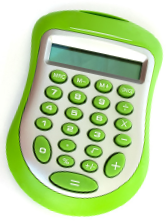This problem solving activity has a number focus.
Select a number less than 20.
Skip count with it to 1000.
How many numbers can you find that will hit no hundreds through to 1000.
- Use calculators to explore multiples of numbers to a 1000.
- Identify number patterns in multiples.
- Devise and use problem solving strategies.
This problem explores the idea that large numbers are made up of smaller numbers. It also helps students form a more accurate idea of the value of a 1000. The students develop their understanding of multiples by skip counting with a calculator, using the repeat function. For example, skip count by sevens by pressing: 7 + = = = etc. The calculator allows the students to work with larger numbers, to look for patterns in the multiples of numbers, and apply this knowledge to solving problems.
The Problem
Select a number less than 20. Skip count with it to 1000. How many numbers can you find that will hit no hundreds through to 1000.
Teaching Sequence
- Introduce the problem by using the calculators to skip count in 8's.
- Record the multiples of 8 as they are found up to 200.
- Ask the students to predict which other hundreds they think would be "hit" (multiples of 8). Give them time to find the hits (200, 400, 600, 800)
- Discuss the pattern found.
- Read the problem for the students to work on in pairs.
- Visit with the pairs as they work asking:
What are the next hundreds you will hit exactly? How do you know?
Which number will you pick next? Will that number hit a hundreds number? Which one?
Can you pick a number that will hit every hundred through to 1000? Are there others? - Encourage the students to organise their findings into a list and use the list to look for patterns.
- Share lists and patterns.
Extension
What numbers will hit every hundred through 1000?
Solution
11, 13, 17, 19
Solution to the Extension
1, 2, 4, 5, 10
